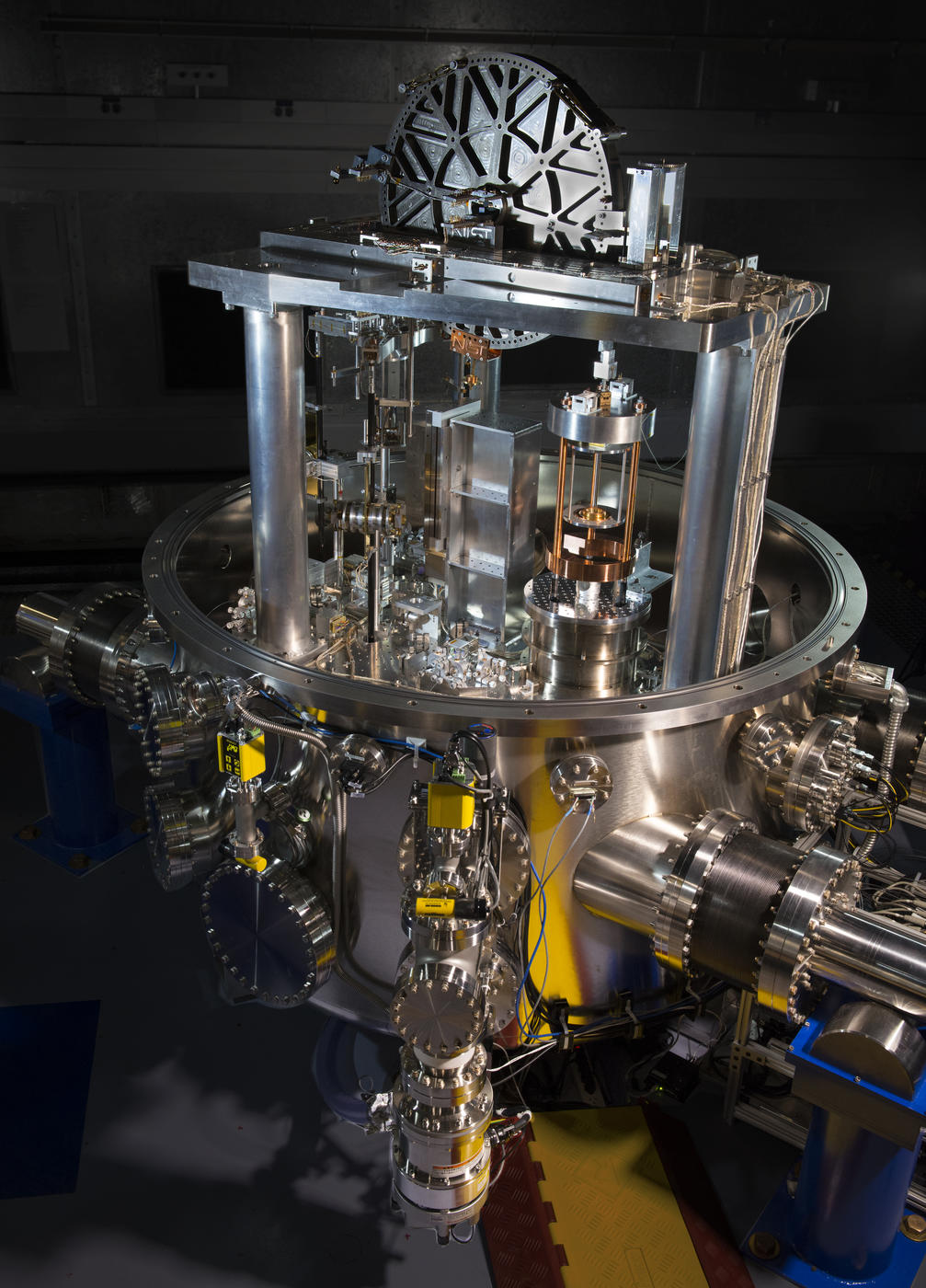|
 Kibble balance at the National Institute of Standards and Technology[11]. |
The Avogadro Project takes an independent approach. Since the kilogram and the number of silicon atoms in one mole are related by the molar mass of silicon and Avogadro's number, the kilogram can be determined by the mass of a known number of silicon atoms. Using the known spacing of atoms in a silicon lattice, the volume of a silicon sphere can be measured to determine the number of atoms in that sphere. With high enough accuracy in measuring the volume of the silicon sphere and the spacing of the atoms in the silicon lattice, the kilogram can be defined with great accuracy[12].
 Achim Leistner of the Avogadro Project holds a 1 kg silicon sphere that is one of the roundest objects on Earth[12]. |
However different they are, these approaches are nonetheless complementary. With two independent measurements of the same quantity, we can be sure about the theory behind each approach. The two methods eventually agreed to seven decimal places[13], confirming each other's accuracy. The next year, the kilogram was redefined in terms of fundamental constants.
Index
 [1] [1]2, Old Definitions of the Kilogram |
 [2] [2]3, Potential Definitions |
 [3] [3]4, Current Definition |
